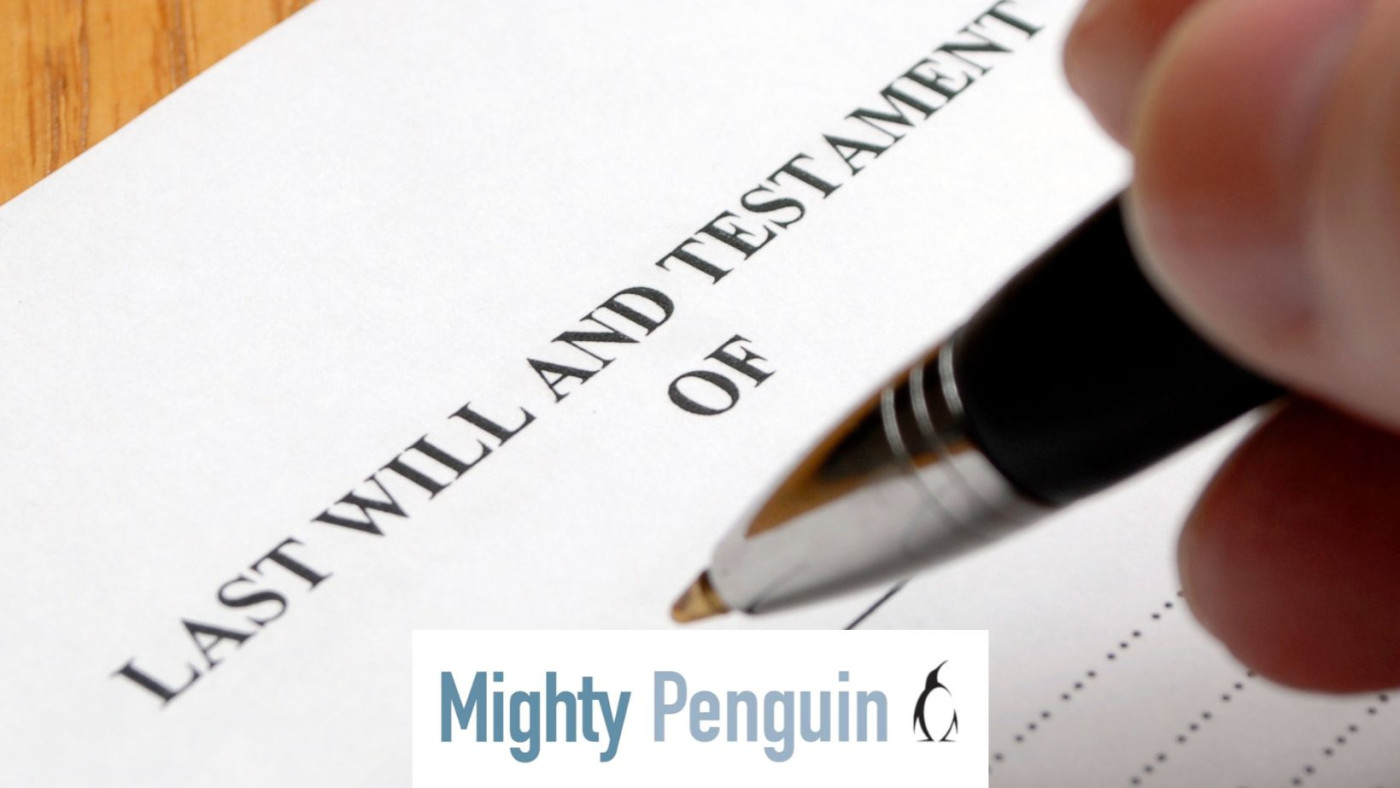Planned giving is one of the most powerful—but often underused—tools in a fundraiser’s toolkit. It’s not flashy. It doesn’t promise quick wins. But when done right, it can completely transform your nonprofit’s future.
This blog will walk you through how to launch a planned giving campaign in clear, simple steps. Whether you’re a one-person shop or have a whole development team behind you, this is your moment.
Why Now?
Because there’s no better time. Seriously.
Up to 90% of donor wealth is tied up in assets, not in their checking accounts. We’re talking real estate, retirement plans, life insurance policies, stocks, wills—you name it. When we only focus on cash donations, we’re missing a massive opportunity.
Planned giving allows your donors to make a meaningful impact without affecting their cash flow today. That’s a big win for them—and for you.
So… What Is Planned Giving?
Donors leave a portion of their estate or assets to your nonprofit. The most common—and easiest—way to get started? Beneficiary gifts. These gifts can be made through a will, life insurance policy, or retirement account. All a donor needs to do is name the nonprofit as a beneficiary on the relevant account.
For beneficiary gifts, all you need is your nonprofit’s legal name and tax ID number—that’s it! Donors can:
- Leave a gift in their will
- Name your nonprofit as a beneficiary of their retirement plan or life insurance policy
- Give a percentage of assets without impacting their heirs
It’s simple, flexible, and deeply impactful.
Planned giving shouldn’t feel mysterious. Your role is to demystify it—for both your donors and your internal team. The easier you make it to understand and act on, the more likely people are to engage.
Start with a few essentials:
- A simple, dedicated landing page on your website
- A clear and inviting brochure or “Planned Giving Options” booklet
- A named contact person at your organization
- A customizable legacy intention form
- A brief explanation that an intention form is not legally binding
Note: A pledge is typically a binding commitment to give. A legacy intention form, on the other hand, is non-binding—it simply lets your organization know that the donor has included you in their planning. It opens the door for appropriate stewardship while respecting the donor’s flexibility.
You don’t need to be a tax expert to support planned giving. You just need to be a great listener—curious, thoughtful, and willing to ask the right questions.
Who Should You Talk To?
Start with your most loyal supporters—those who already believe deeply in your mission. Ideal planned giving prospects include:
- People personally impacted by your work
- Frequent donors or dedicated volunteers
- Those who often say, “I wish I could do more”
- Donors who’ve supported you faithfully for many years
Why? Because these are the people who already see your organization as part of their story. By connecting with them about planned giving, you’re inviting them to leave a lasting legacy—a way to ensure the mission they care about continues to thrive long into the future.
Don’t wait for a major donor to appear. Many planned gifts come from modest givers with big hearts and deep commitment to your organization.
Keep your list manageable—around 10 to 20 names—and engage consistently with thoughtful, heartfelt conversations. This steady stewardship nurtures trust and opens the door to meaningful legacy support.
How to Start the Conversation
Planned giving doesn’t need a dramatic lead-in. Let it come up naturally—especially around life milestones like retirement, becoming an empty nester, or estate planning.
Here’s a simple script:
“I’ve been working with other donors who want to make a bigger impact, but aren’t in a position to give more right now. That has led us to create planned giving options for our supporters. Would you be open to a conversation about legacy giving?”
“A few of our long-time supporters have included us in their legacy plans. It’s such a powerful gesture. Have you ever thought about something like that?”
“We’re working on ensuring our mission lasts for generations. Many people are helping by planning gifts that don’t impact their finances today. Would you like to hear how?”
Let them know:
- Their gift can have lasting impact
- It won’t affect their cash flow today
- It can be tax-efficient and easy to set up
Action Plan for Your Team
To launch your campaign, you’ll need:
- Gift acceptance policies
- Clear reporting and tracking for planned gifts
- Goals—how many people to talk to and how many pledges you aim for
- A legacy society or recognition system (if appropriate)
Sample Planned Giving Policy Statement
At [Your Nonprofit Name], we welcome and encourage legacy gifts as a vital part of sustaining our mission for future generations. Planned gifts may include bequests, beneficiary designations on retirement accounts or life insurance, charitable trusts, and gifts of appreciated assets.
We accept planned gifts in the following forms:
- Bequests (via will or trust)
- Beneficiary designations (IRA, 401(k), life insurance, etc.)
- Charitable gift annuities or remainder trusts
- Gifts of real estate or appreciated securities (subject to review)
All planned gifts are reviewed and accepted in accordance with our Gift Acceptance Policy. Donors are encouraged to consult with their financial advisor, accountant, or attorney before making a planned gift. We are happy to provide language and documentation support to donors and their advisors.
Unless requested otherwise, donors who include [Your Nonprofit Name] in their estate plans will be invited to join our Legacy Circle and recognized for their commitment to our future.”
Get your board involved, one conversation at a time. Then do the same with your most loyal donors.
Stewardship Is Everything
Planned giving is about trust. Donors are giving you a piece of their life story. Honor it.
Ask:
“What would you like to see from us in the future?”
“How would you like to stay involved?”
“What would be most meaningful to you as we work together over the coming years?”
Celebrate your donors—whether publicly or privately—and keep them updated on your mission. Some will document their commitment immediately; others may take years. Maintain a strong, pressure-free relationship. Acknowledging birthdays, life events, or major accomplishments doesn’t hurt either.
Bonus Resource: Build-Your-Own Planned Giving Kit
Planned giving helps donors leave a legacy while advancing your nonprofit’s mission. Use this guide to create your own branded booklet or digital resource that informs, inspires, and invites supporters to consider a planned gift.
What to Include in Your Planned Giving Kit
1. Title Page:
- “Planned Giving Options for [Your Nonprofit Name]”
- Include your logo, tagline, and a compelling photo or quote
2. Introduction to Planned Giving
- A friendly welcome letter from your Executive Director or Development Chair
- A clear definition of planned giving (see sample below)
- A note on how legacy gifts align with your mission and vision
3. Legacy Gift Options
- Bequests (wills and trusts)
- Beneficiary designations (retirement plans, life insurance, DAFs)
- Charitable gift annuities and remainder trusts
- Real estate or stock transfers
- Life insurance gifts
4. Benefits to the Donor
- Leave a legacy that reflects their values
- Potential tax savings
- Simplicity and flexibility
- Membership in your Legacy Society (if applicable)
- Emotional satisfaction of sustaining a cause they care about
5. Impact of Legacy Gifts on Your Mission
- Include information about impactful programs
- Share real stories or hypothetical examples of how legacy gifts make a difference
- Use infographics or simple charts to show long-term impact
6. Sample Intent Letter
- See customizable template below
7. Stewardship and Follow-Up Guidance
- Explain how you'll recognize and stay in touch with planned giving donors
- Offer options for anonymity
- Provide a contact person for questions
Customizable Pledge Letter Template
Here’s a sample letter you can customize and include in your kit or on your website:
[Your Nonprofit Name]Legacy Gift Intention Form
Thank you for considering a legacy gift to support [Your Nonprofit Name]. This non-binding form lets us know of your generous intentions and helps us recognize your commitment—publicly or privately.
Donor Name(s): _________________________________________Address: ________________________________________________Phone: __________________ Email: __________________________
I/we have made the following legacy provision(s) for [Your Nonprofit Name]:☐ A bequest in my/our will☐ A trust naming [Your Nonprofit Name] as beneficiary☐ Beneficiary designation on life insurance, IRA, or retirement plan☐ Other (please describe): _____________________________
Estimated Gift Amount (optional): $____________________
Gift Preference (optional):☐ Unrestricted – use where the need is greatest☐ Program support (please specify): _______________________☐ Endowment or legacy fund☐ Other (please specify): _________________________________
Recognition Preferences:☐ You may include my/our name(s) as a member of your Legacy Society☐ I/we prefer to remain anonymous
Signature: ____________________________Date: ____________________
Please return this form to:[Your Name or Department][Address][Email & Phone Number]
Optional Add-ons:
- A thank-you note template from your board or ED
- A page of testimonials from legacy donors
- FAQs about planned giving
- QR code linking to a planned giving webpage
- Digital version as a fillable PDF or microsite
You Can Launch a Planned Giving Campaign—Without Losing Your Mind
Planned giving may seem complex at first, but with clear steps, simple tools, and steady relationship-building, it’s absolutely manageable—even for a small team or solo fundraiser.
Remember: it’s not about rushing or pressure. It’s about building trust over time, honoring your donors’ stories, and inviting them to join you in creating a lasting legacy.
With a focused action plan, thoughtful conversations, and a little patience, you can confidently grow this powerful—and often underused—tool in your fundraising toolkit.
And if you ever need a partner to help simplify the process, Mighty Penguin is here to guide you every step of the way.
Let’s build your legacy—one conversation at a time.


